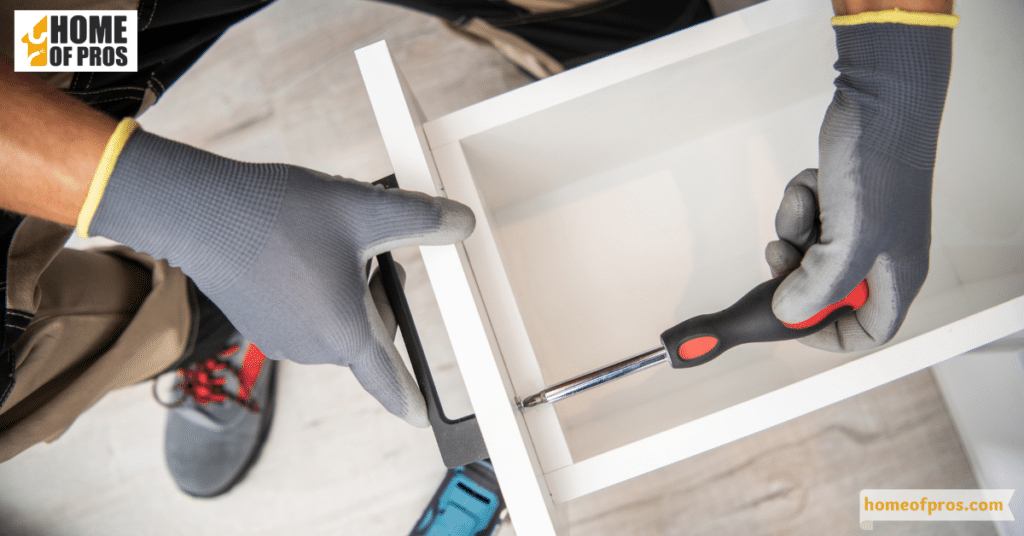Creating custom furniture is a rewarding endeavor that allows you to express your creativity and craftsmanship. In this step-by-step guide, we’ll walk you through the process, from conceptualizing your design and selecting materials to crafting and finishing your unique piece. Whether you’re a seasoned woodworker or a novice DIY enthusiast, this journey will help you bring your furniture dreams to life.
This comprehensive guide will walk you through the intricate process of building custom furniture, whether you’re a seasoned woodworker or a novice DIY enthusiast. We’ll provide you with a step-by-step roadmap to turn your furniture dreams into tangible, functional masterpieces.

1. Planning Your Custom Furniture
In the world of woodworking, before you pick up a saw or select your materials, a solid plan is the cornerstone of success. “Planning Your Custom Furniture” serves as your compass for this creative journey. In this section, we emphasize the paramount importance of meticulous planning.
You’ll learn how to breathe life into your ideas by conceptualizing your design, considering both form and function and envisioning your piece in its intended space. But we go beyond imagination; we guide you through transforming your creative concepts into detailed sketches and precise measurements.
This well-thought-out plan not only crystalizes your vision but also ensures that your project progresses smoothly, accurately, and efficiently, setting the stage for a successful custom furniture creation.

2. Selecting Materials
We’ll explore the aesthetics of wood, uncovering the grain patterns, colors, and textures that define each type. But we don’t stop at wood; we’ll introduce you to alternative materials such as metal or reclaimed wood, expanding the horizons of your design possibilities.
This section empowers you with the knowledge to make informed decisions, enabling you to select materials that align with your project’s specific needs, sustainability goals, and budget constraints.
By understanding the pros and cons of each material, you’ll embark on your custom furniture project equipped with the confidence to choose the ideal foundation for your masterpiece.

3. Tools and Equipment
To bring your custom furniture to life, you’ll need the right tools and equipment. We’ll provide you with a comprehensive list of essential tools, explaining their functions and importance in the woodworking process. Whether you’re a novice or an experienced woodworker, we’ll recommend brands and options suitable for your skill level and budget.
Having the right tools at your disposal isn’t merely about convenience; it’s about precision and efficiency, allowing you to work with accuracy and confidence. With the proper tools and equipment in hand, you’ll be poised for success, ready to take on each step of your custom furniture project with the skill and expertise of a true artisan.

4. The Construction Process
This section isn’t just about instruction; it’s about understanding the intricacies of woodworking, learning to coax the potential from every piece of material, and witnessing your vision take form in the tangible world.
Safety takes center stage as we emphasize the importance of protective gear, safe handling of tools, and best practices to prevent accidents. Our aim is to not only provide a blueprint for building custom furniture but to instill in you the confidence and skill to bring your ideas to life with precision and safety as your allies.

5. Finishing Touches
What separates ordinary furniture from professional-grade custom pieces is the finishing touches. Here, we explore the art of achieving a flawless finish. Learn the techniques of sanding to perfection, selecting the right stains or finishes to match your desired aesthetic, and applying protective coatings that not only enhance the appearance but also ensure your furniture withstands daily use and the test of time.
By mastering these finishing techniques, your custom furniture will not only be visually stunning but also incredibly durable, ensuring that your hard work stands as a testament to your skill and dedication.

6. Troubleshooting Common Issues
In the world of woodworking, every craftsman, whether a seasoned artisan or a novice enthusiast, encounters hurdles along the creative journey. The “Troubleshooting Common Issues” section is your steadfast guide when navigating the unexpected twists and turns that woodworking often presents. Here, we acknowledge that challenges are an inherent part of the craft and provide you with a toolbox of practical solutions to tackle them head-on.
We’ve meticulously identified and anticipated common pitfalls that woodworkers might face, such as misalignment, cracking, or finishing flaws. When the joints don’t fit as perfectly as intended, when a crack emerges where you least expect it, or when an imperfection mars your carefully applied finish, we’ve got you covered.

Conclusion
As you finish your custom furniture project, you’ll not only have a beautiful piece to be proud of but also a newfound wealth of knowledge and skills. In the conclusion, we’ll summarize the key takeaways from this comprehensive guide, emphasizing the immense satisfaction and creative freedom that come with the craftsmanship of building your own custom furniture.
Your journey is not just about the end product; it’s about the artistry, the learning, and the sense of accomplishment that arises from creating something uniquely yours with your own hands.












